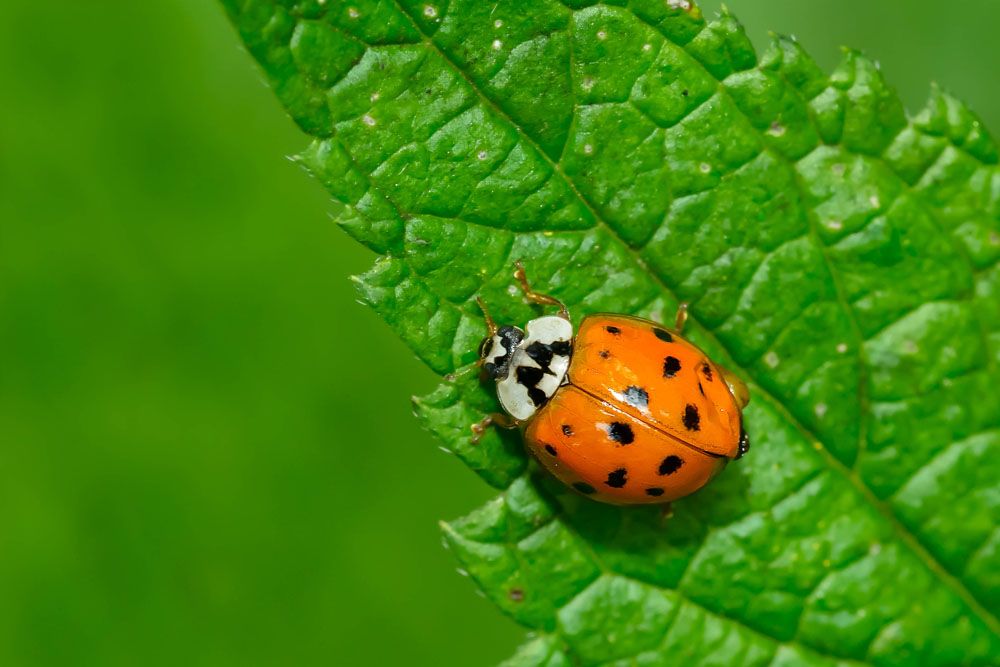
Multicolored Asian Lady Beetle – Harmonia axyridis
Multicolored Asian Lady Beetle
Latin Name: Harmonia axyridis
Common Name: Multicolored Asian Lady Beetle, Halloween Beetle
Appearance: Also known as ladybird beetle or ladybug, multicolored Asian lady beetle has convex (dome) top while the flat bottom and round body, if seen from the top. Like other beetles, it is also a small insect having length and width 6 mm and 5 mm, respectively. With more than 100 forms found, the most common in California are those with red to yellowish-orange forewings with around 19 black spots. The most distinctive feature of this beetle is the M or W-shaped white border present on the prothorax.
Host Plants or Food: Aphids, Thrips, Mites, Scales, Psyllids, and Adelgids.
Territory: Multicolored Asian lady beetle is native to Asia and was introduced in USA and Europe purposefully to control the aphids and scales biologically. Now, it has become well established in North America, South America, Central America, Europe, and South Africa.
Mode of Damage: Beneficial Garden Insect
Habits and Life History:
Don’t confuse it with the Japanese beetle, a plant pest. It is good to see it around your garden as they will save you a lot of money by eating aphids and other soft-bodied insects.
Where there is prey, multicolored Asian beetle is found there. It sometimes contaminates ripen fruits and wine with their bitter blood.
They have a life span typically up to 30-90 days but can live up to 3 years.
Female lays eggs in clusters on the underside of the leaves. They have a pale yellow color and are oblong-shaped, 1.5mm in length.
Larvae are 8mm long with blackish to the dark grey body and look like tiny alligators.
It takes almost 3-6 weeks for the eggs to develop into adults, and they produce 6 generations per year.
